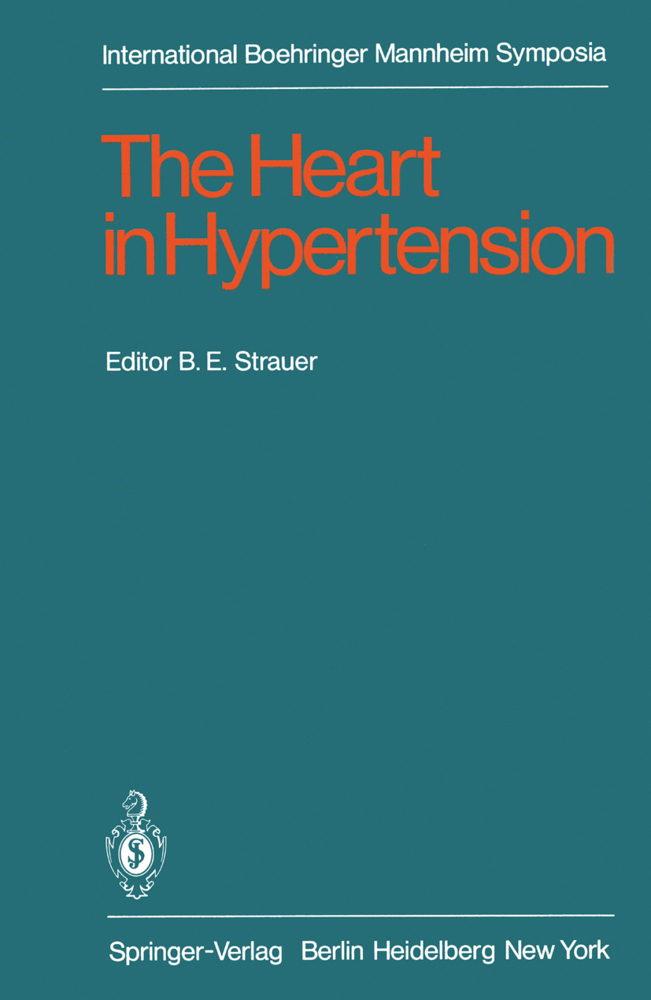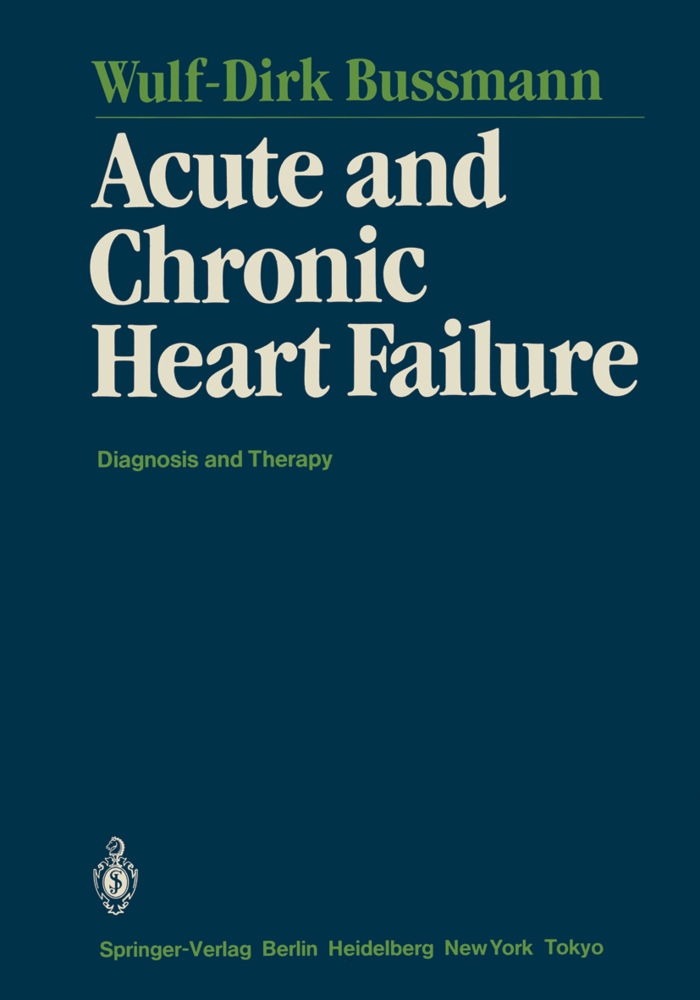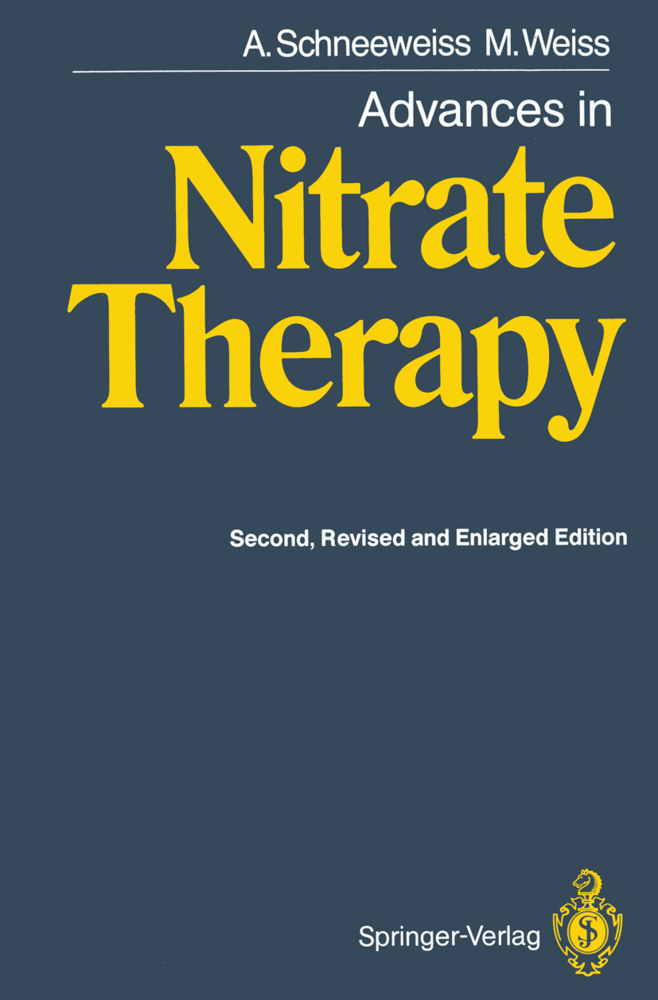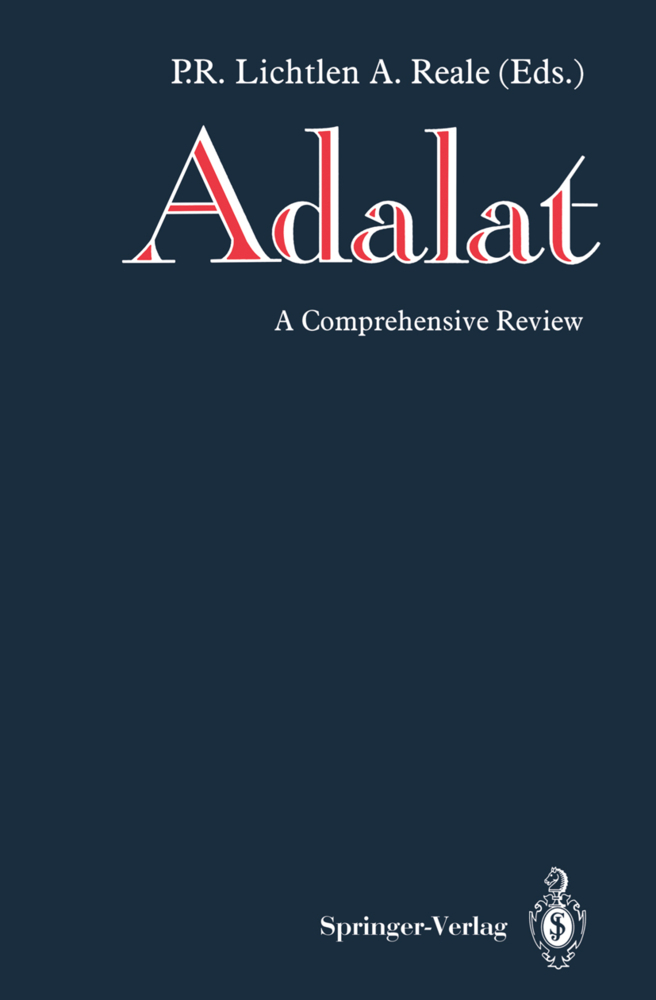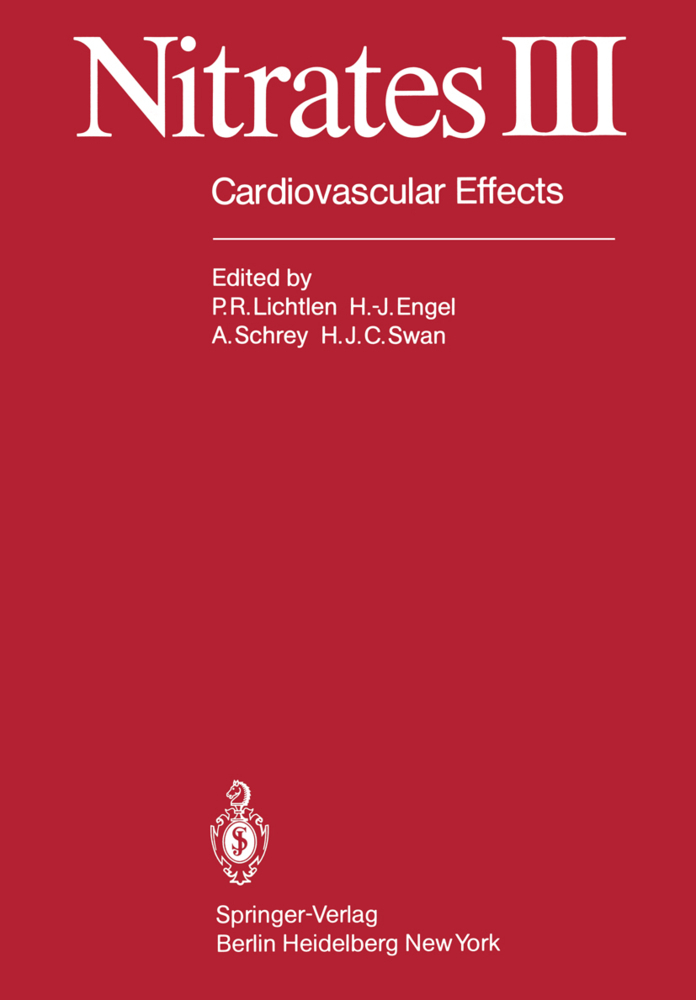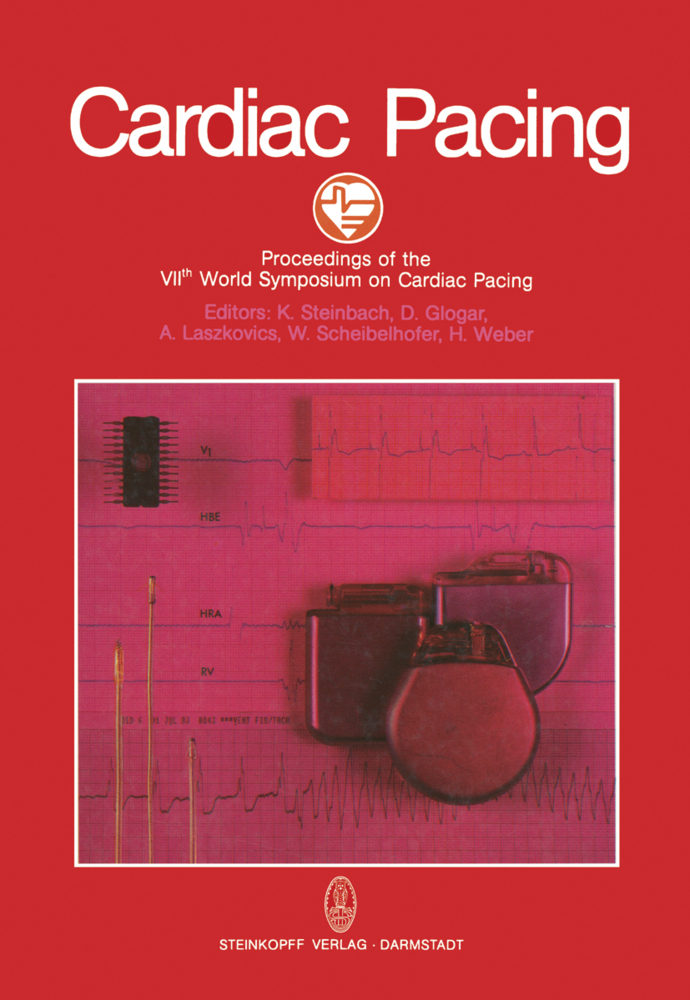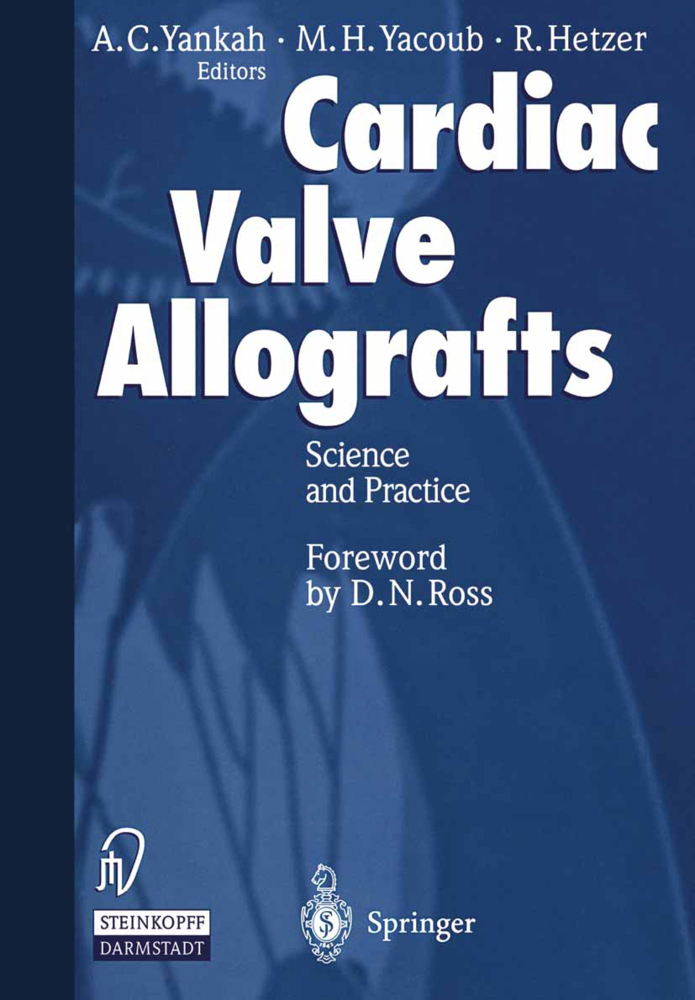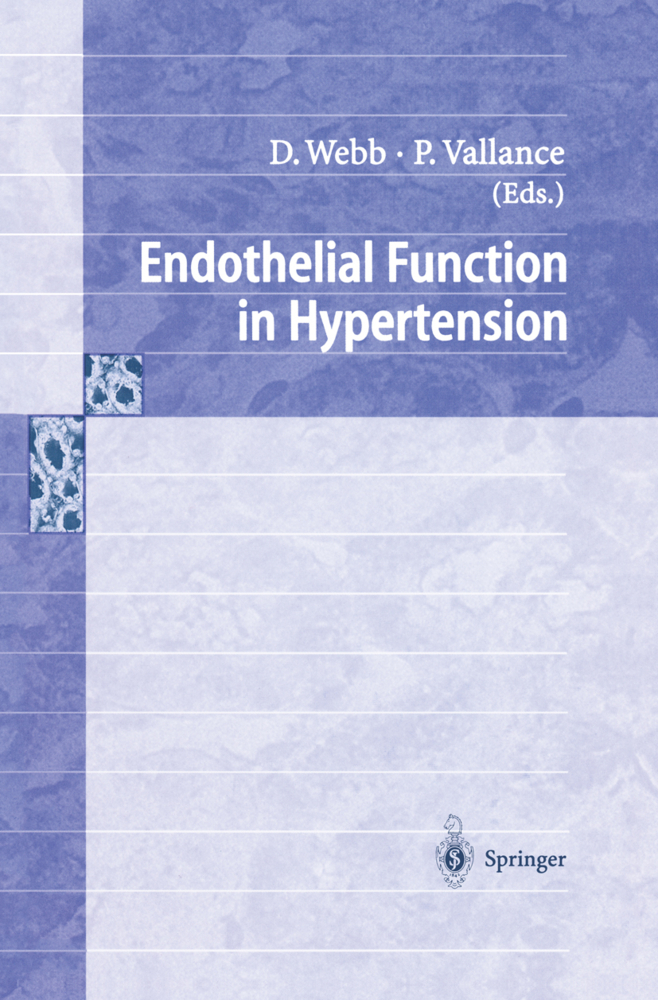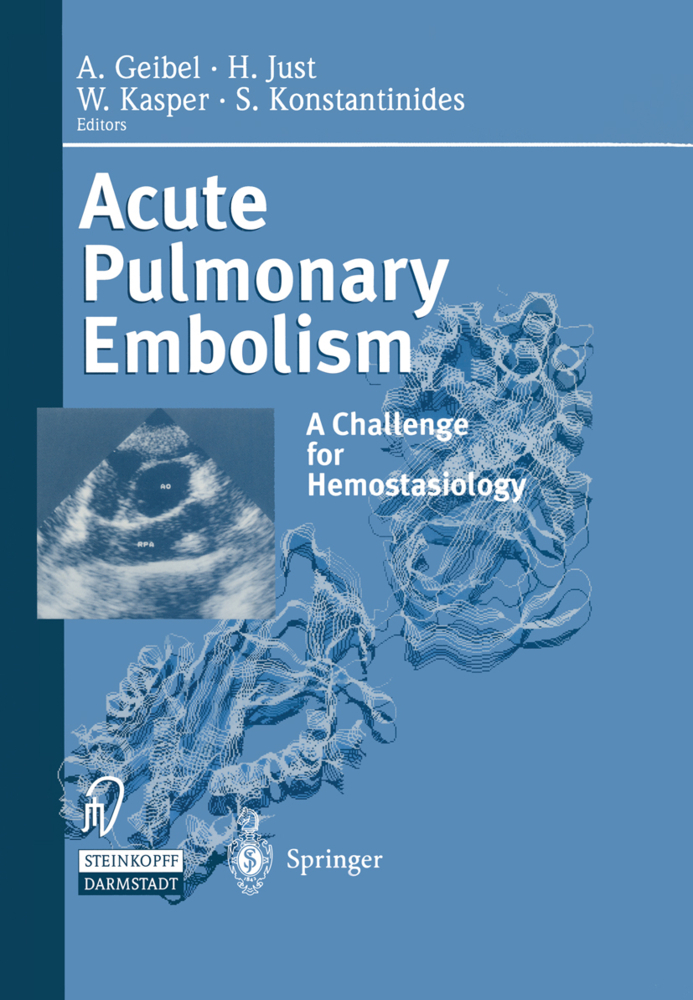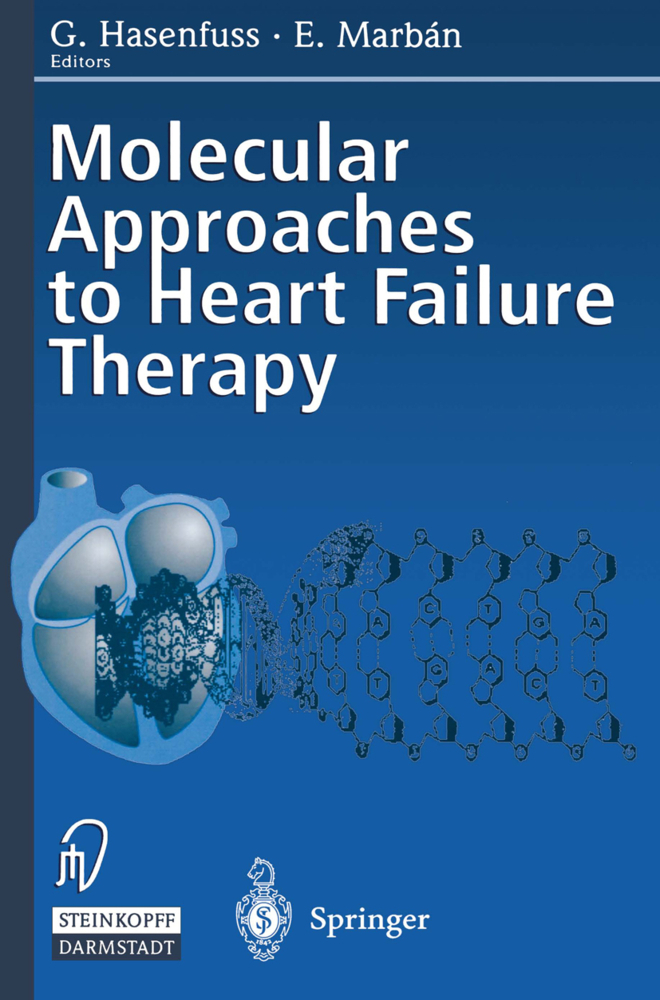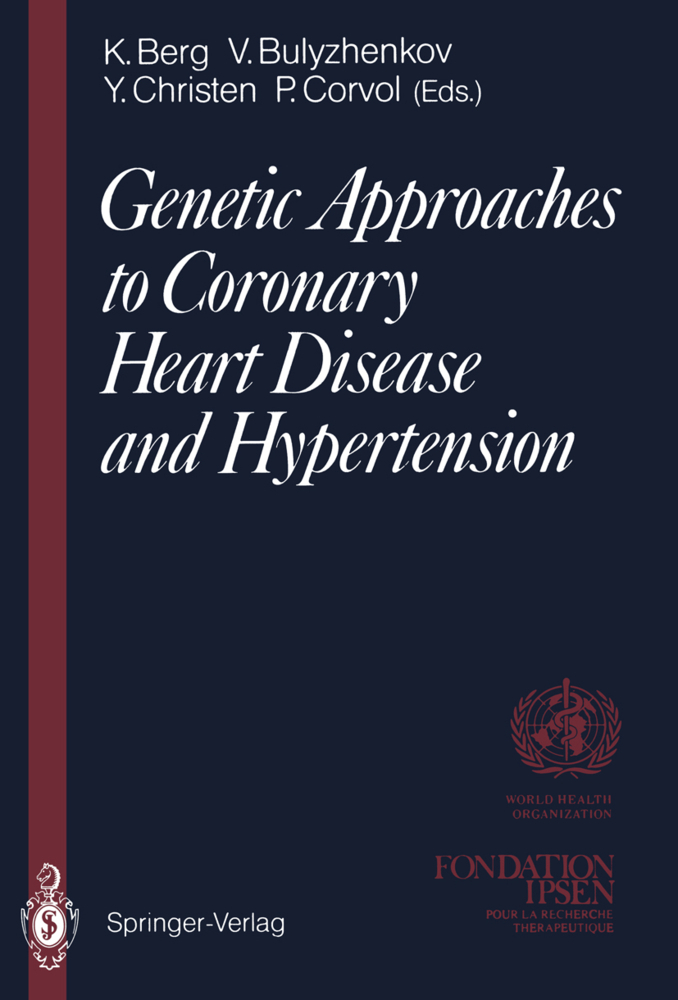The Heart in Hypertension
The Heart in Hypertension
Hypertensive heart disease is one of the most frequent diseases in man. It is esti mated that there are six to eight million hypertensive patients in the Federal Re public of Germany today. This corresponds with an incidence of 10%-15% in the whole population. Approximately between three and four million show organic eardiac manifestations of hypertension. Of all deaths occurring before the age of 65,30%-40% are attributable to hypertension, and the total morta lity from hypertension is about 20%-25%. Recent epidemiological and clini cal studies have revealed similar figures for other countries, such as the United States and Japan. Hypertensive hypertrophy and cardiac failure are found to be many times more frequent than eardiae hypertrophy and failure of any other origin. Despite the apparent clinical and social importance of the biologieal system "blood pressu re and the heart", data on eardiac performance, on systemic and coronary haemodynamics and on the morphological, bioehemical and contractile proper ti es of ventrieular heart muscle in both experimental and clinical hypertension are rare. This is the reason and stimulus for having organized this symposium, which is the first one coneeming this topie.
Experimental Hypertension and Its Significance for Clinical Hypertension
Left Ventricular Hypertrophy in Chronic Pressure Load Due to Spontaneous Essential Hypertension Left Ventricular Function, Left Ventricular Geometry, and Wall Stress
Left Ventricular Hypertrophy in Chronic Pressure Load Due to Spontaneous Essential Hypertension Contractility of the Isolated Left Ventricular Myocardium, and Left Ventricular Stiffness
Systemic Hemodynamics and Cardiac Function in the Spontaneously Hypertensive Rat: Similarities with Essential Hypertension
II: Myocardial, Adrenergic and Noncontractile Responses
Reversal of Cardiac Hypertrophy by Antihypertensive Therapy
Left Ventricular Dynamics and Myocardial Function in Goldblatt Hypertension of the Rat Biochemical, Morphological and Electrophysiological Correlates
Catecholamines in Experimental and Essential Hypertension
Session B: Cardiac Mechanochemistry and Morphology in Various Forms of Hypertensive Heart Disease
I: Contractile Proteins and Contraction Energetics
Cardiac Myosin in Heart Overloading
Properties of Myocardial Myosin in Left Ventricular Hypertrophy Due to Spontaneous Essential Hypertension in Rats
Cross Bridge Mechanics in the Heart Muscle of Spontaneously Hypertensive Rats
The Utilization of Energy by the Myocardium Hypertrophied Secondary to Pressure Overload
Coronary Haemodynamics and Myocardial Adenosine Release Under the Influence of Digitalis Glycosides (Digoxin)
II: Microscopic Pathology of the Myocardium and Coronary Arteries
Microscopic Pathology of the Heart Muscle and of Coronary Arteries in Arterial Hypertension.-Microscopic Pathology of Intramural Coronary Arteries and Arterioles of the Left Ventricle in Arterial Hypertension
Reduced Coronary Reserve, and Ultrastructural Changes of the Myocardium in Patients with Angina Pectoris, Arterial Hypertension, and Normal Coronary Arteries
Session C: Cardiac Function and Metabolism in Clinical Hypertension
I: Pathogenetic Implications, Ventricular Wall Dynamics and Coronary Circulation
Left Ventricular Hypertrophy in Hypertension: Prognostic and Pathogenetic Implications (The Framingham Study)
Structural Adaptation of the Heart in Hypertension and the Physical Consequences
Performance, Wall Dynamics and Coronary Function of the Left Ventricle in Hypertensive Heart Disease
II: Afterload Changes and Ventricular Function
The Pressure Overloaded Heart: Physiological and Clinical Correlates
Effect of Systemic Vasoconstriction on Left Ventricular Function: Implications Regarding Hypertension and Heart Failure
Ventricular Function and Coronary Hemodynamics Under the Influence of Vasodilating Agents
Session D: Central Haemodynamics, Regional Wall Mechanics, and Ventricular Relaxation in Clinical Hypertension
I: Central Haemodynamics at Rest and During Exercise
Central Haemodynamics in Hypertension at Rest and During Exercise
Arterial Hypertension: Left Ventricular Function at Rest and During Exercise
Assessment of Left Ventricular Muscle Mass with 201 Thallium Myocardial Imaging
II: Noninvasive Assessment of Ventricular Contraction and Relaxation
Detection of Abnormal Left Ventricular Performance During Early Systole in Patients with Chronic Pressure Overload Due to Systemic Arterial Hypertension
Quantitative Echocardiographic Analysis of Pharmacological Stress Testing in Essential Hypertension
Left Ventricular Relaxation and Filling Pattern in Different Forms of Left Ventricular Hypertrophy
Session E: Therapy of Hypertensive Heart Disease
I: Therapeutical Management of Hypertrophy and Heart Failure
Impaired Cardiac Performance in Rats with Long-Term Spontaneous Hypertension
Pathophysiologic Basis of Antihypertensive Therapy in Man
Central Hemodynamics at Rest and During Exercise Following Intravenous Digoxin in Hypertension
II: Use of Beta-Receptor Blocking Agents
Beta-Adrenergic Receptor Blockade in the Treatment of Essential Hypertension
Beta-Receptor Blockade in the Treatment of Renal Hypertension
Left Ventricular and Coronary Response to Beta-Receptor Blockade in Essential Hypertension.
Session A: Cardiac Performance in Experimental Hypertension
I: Pathogenesis of Experimental Hypertension: Ventricular Function and Myocardial ContractilityExperimental Hypertension and Its Significance for Clinical Hypertension
Left Ventricular Hypertrophy in Chronic Pressure Load Due to Spontaneous Essential Hypertension Left Ventricular Function, Left Ventricular Geometry, and Wall Stress
Left Ventricular Hypertrophy in Chronic Pressure Load Due to Spontaneous Essential Hypertension Contractility of the Isolated Left Ventricular Myocardium, and Left Ventricular Stiffness
Systemic Hemodynamics and Cardiac Function in the Spontaneously Hypertensive Rat: Similarities with Essential Hypertension
II: Myocardial, Adrenergic and Noncontractile Responses
Reversal of Cardiac Hypertrophy by Antihypertensive Therapy
Left Ventricular Dynamics and Myocardial Function in Goldblatt Hypertension of the Rat Biochemical, Morphological and Electrophysiological Correlates
Catecholamines in Experimental and Essential Hypertension
Session B: Cardiac Mechanochemistry and Morphology in Various Forms of Hypertensive Heart Disease
I: Contractile Proteins and Contraction Energetics
Cardiac Myosin in Heart Overloading
Properties of Myocardial Myosin in Left Ventricular Hypertrophy Due to Spontaneous Essential Hypertension in Rats
Cross Bridge Mechanics in the Heart Muscle of Spontaneously Hypertensive Rats
The Utilization of Energy by the Myocardium Hypertrophied Secondary to Pressure Overload
Coronary Haemodynamics and Myocardial Adenosine Release Under the Influence of Digitalis Glycosides (Digoxin)
II: Microscopic Pathology of the Myocardium and Coronary Arteries
Microscopic Pathology of the Heart Muscle and of Coronary Arteries in Arterial Hypertension.-Microscopic Pathology of Intramural Coronary Arteries and Arterioles of the Left Ventricle in Arterial Hypertension
Reduced Coronary Reserve, and Ultrastructural Changes of the Myocardium in Patients with Angina Pectoris, Arterial Hypertension, and Normal Coronary Arteries
Session C: Cardiac Function and Metabolism in Clinical Hypertension
I: Pathogenetic Implications, Ventricular Wall Dynamics and Coronary Circulation
Left Ventricular Hypertrophy in Hypertension: Prognostic and Pathogenetic Implications (The Framingham Study)
Structural Adaptation of the Heart in Hypertension and the Physical Consequences
Performance, Wall Dynamics and Coronary Function of the Left Ventricle in Hypertensive Heart Disease
II: Afterload Changes and Ventricular Function
The Pressure Overloaded Heart: Physiological and Clinical Correlates
Effect of Systemic Vasoconstriction on Left Ventricular Function: Implications Regarding Hypertension and Heart Failure
Ventricular Function and Coronary Hemodynamics Under the Influence of Vasodilating Agents
Session D: Central Haemodynamics, Regional Wall Mechanics, and Ventricular Relaxation in Clinical Hypertension
I: Central Haemodynamics at Rest and During Exercise
Central Haemodynamics in Hypertension at Rest and During Exercise
Arterial Hypertension: Left Ventricular Function at Rest and During Exercise
Assessment of Left Ventricular Muscle Mass with 201 Thallium Myocardial Imaging
II: Noninvasive Assessment of Ventricular Contraction and Relaxation
Detection of Abnormal Left Ventricular Performance During Early Systole in Patients with Chronic Pressure Overload Due to Systemic Arterial Hypertension
Quantitative Echocardiographic Analysis of Pharmacological Stress Testing in Essential Hypertension
Left Ventricular Relaxation and Filling Pattern in Different Forms of Left Ventricular Hypertrophy
Session E: Therapy of Hypertensive Heart Disease
I: Therapeutical Management of Hypertrophy and Heart Failure
Impaired Cardiac Performance in Rats with Long-Term Spontaneous Hypertension
Pathophysiologic Basis of Antihypertensive Therapy in Man
Central Hemodynamics at Rest and During Exercise Following Intravenous Digoxin in Hypertension
II: Use of Beta-Receptor Blocking Agents
Beta-Adrenergic Receptor Blockade in the Treatment of Essential Hypertension
Beta-Receptor Blockade in the Treatment of Renal Hypertension
Left Ventricular and Coronary Response to Beta-Receptor Blockade in Essential Hypertension.
Strauer, Bodo E.
| ISBN | 9783540104964 |
|---|---|
| Artikelnummer | 9783540104964 |
| Medientyp | Buch |
| Copyrightjahr | 1981 |
| Verlag | Springer, Berlin |
| Umfang | 464 Seiten |
| Abbildungen | XVI, 464 p. 33 illus. |
| Sprache | Englisch |

